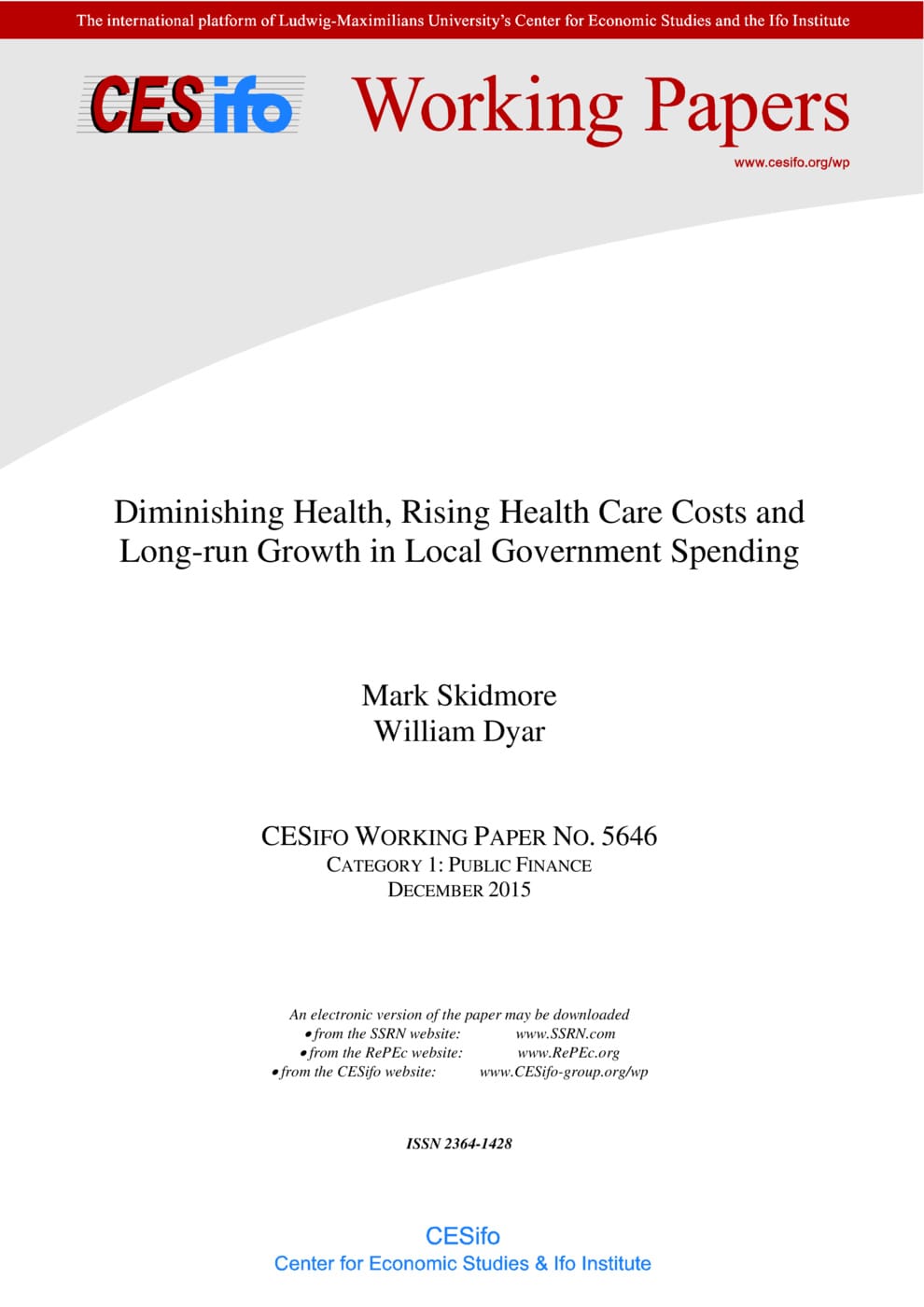Diminishing Health, Rising Health Care Costs and Long-run Growth in Local Government Spending
CESifo, Munich, 2015
CESifo Working Paper No. 5646

Real local government spending in the United States has increased by 240% between 1972 and 2012, faster than can be explained by population growth (a 48% increase), growth in median household income (a 32% increase), or changes in other economic, demographic, and institutional variables typically used to explain the pattern in local government spending. In this paper we examine the role of other potential drivers of local government growth such as growing income disparity, the increasing number of single female-headed households, increasing number of household living in mobile homes, rising healthcare costs, and diminishing health such as increasing in obesity (and associated physical health problems) as well behavioral problems such as hyperactivity, anxiety, depression, and violence associated with the changing diet of the American people. Since the 1970s, the obesity rate in the United States has increased from 12% to 35%. Using the obesity rate as a proxy for changing health, we find that increasing mental/emotional/physical health problems accounts for a significant portion of increased local government spending growth, particularly in human services such as education that require behavioral management. We also find that as local government spending in other spending categories decline with obesity. These findings suggest that deteriorating mental/ emotional/physical health resulting from dietary changes and other factors has increased local government spending and shifted spending priorities.
Public Finance